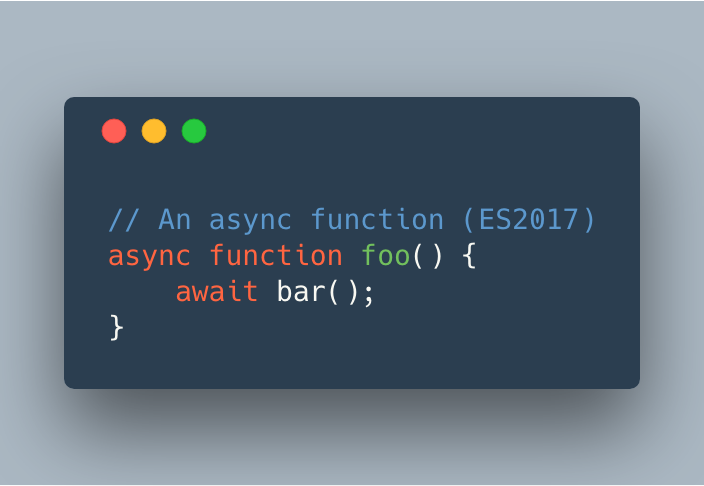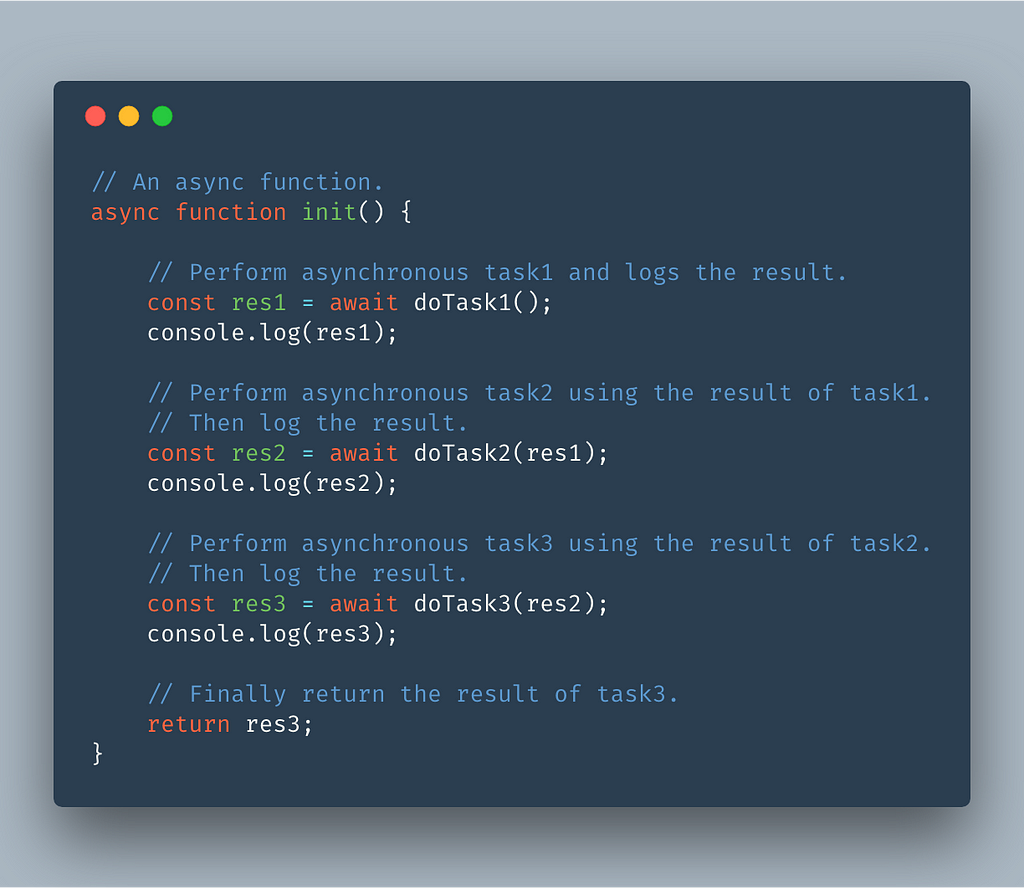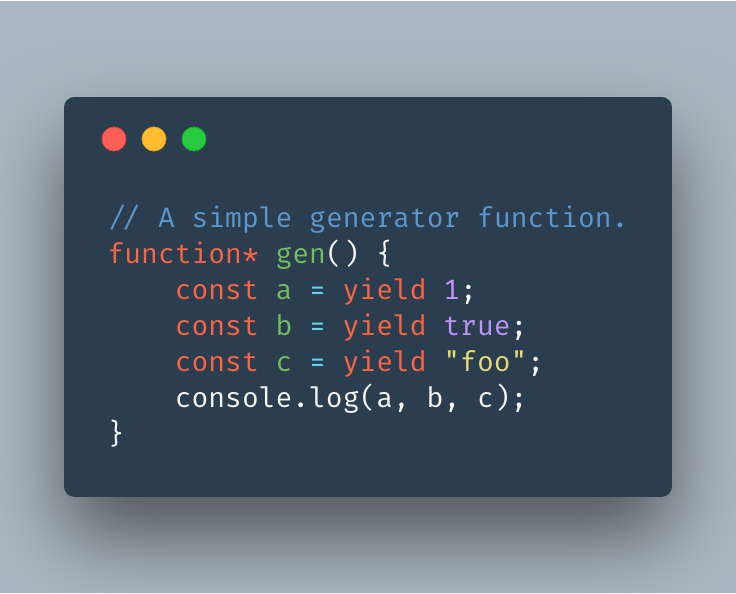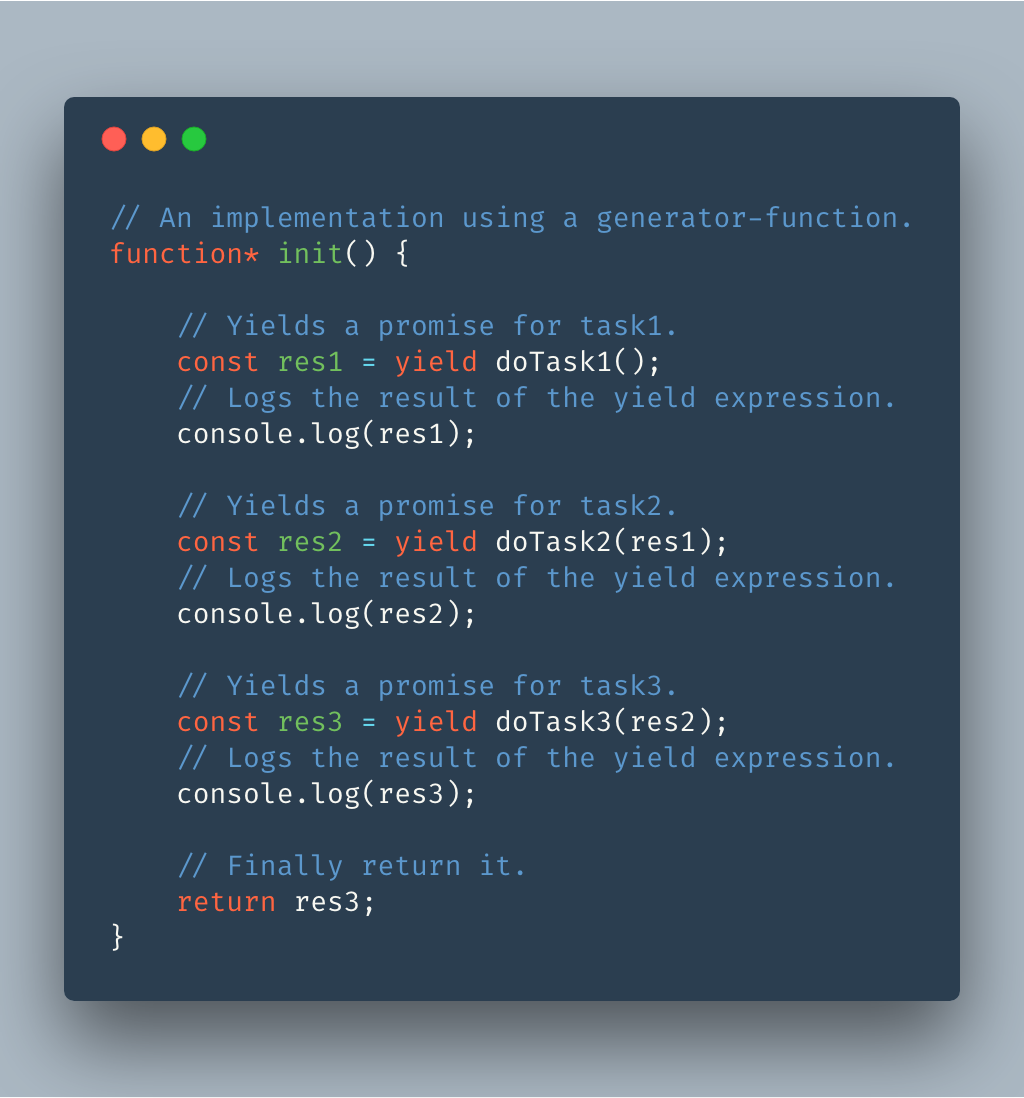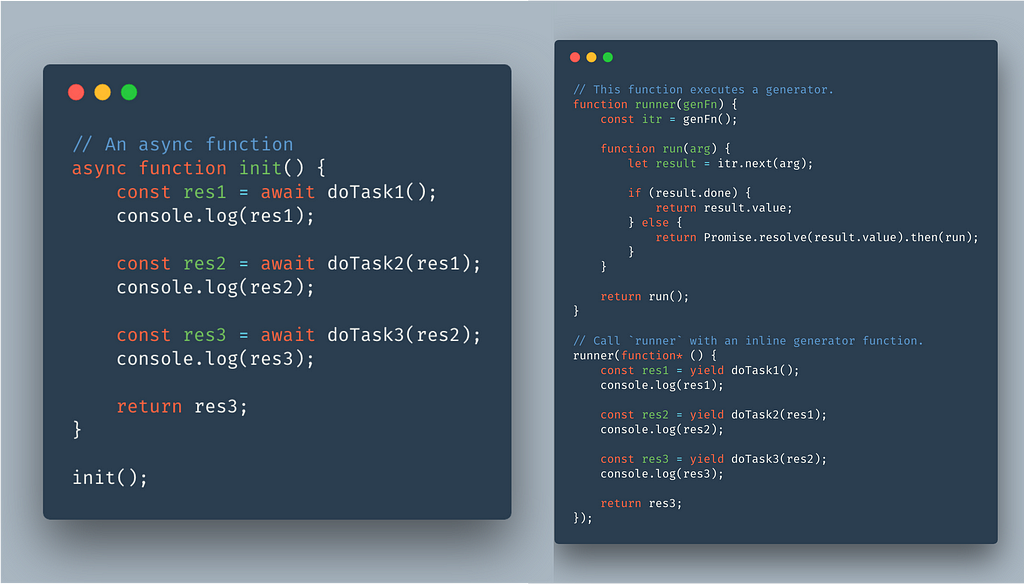Latest news about Bitcoin and all cryptocurrencies. Your daily crypto news habit.
In this article I will describe how the ES2017 async functions are essentially a play between two older JavaScript features: generators and promises, both of which were added earlier to the language in the ES2016 specification.
Before you start reading ..
- This article is not an introduction to promises, generators or async functions.
- The only goal of this article is to describe how async functions can be realised using promises and generators.
- It does not offer any opinion whether async functions are better or worse than the other approach.
- The code examples used in this article are ingeniously contrived for easier explanation. They are not meant for any serious use.
But why .. ?
Since async functions are now natively supported, what is the need to understand how they work?
Well, apart from the obvious reason of curiosity, an important reason is supporting older platforms. If you want your code using these newer features to run on older browser versions or older Node.js versions, you would be required to use tools like Babel to transform these newer features into older features.
Therefore, a solid understanding of how async functions get decomposed into generators and promises can come in handy when reading/debugging your transformed code. For example, here is a simple example of an async function :
This function gets transformed by Babel into the following ES2016 code (don’t worry about understanding it right now, we will cover it later) :
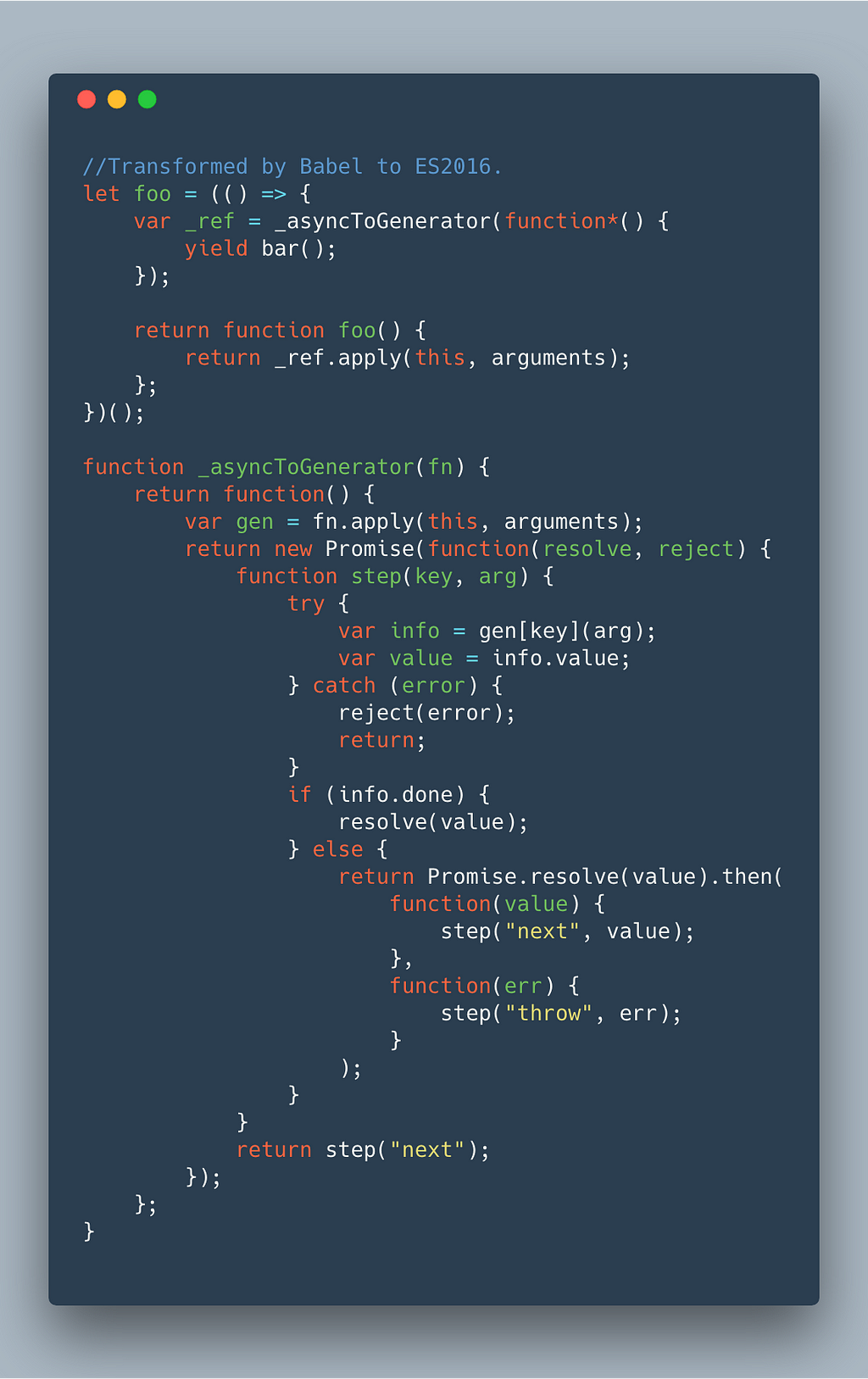 Babel output for the previous async function (ES2016)
Babel output for the previous async function (ES2016)
They look really different! However, if you understand how async functions actually work, then this transformation is fairly obvious.
Another fun fact, browsers also implement async functions in a similar fashion i.e. they transform the async code to use generators and promises quite similar to Babel.
Okay, so how does it happen ?
Sometimes in order to understand how something works, the best way is to build it yourself. So let’s flip the question:
Imagine we are given a piece of code that uses async functions, how can we rewrite it using only promises and generator functions?
Here’s an async function :
It performs three asynchronous tasks, one after the other where each task depends on the completion of the previous task. Finally, it returns the result of the last task.
How can we write it using generators ?
Generators are functions which can be exited and later re-entered. Let’s quickly recap how they work. Here’s a simple generator function :
This generator-function gen has some interesting aspects (lifted from the MDN docs) :
- When a generator function is called, its body is not executed right away. Instead it returns an iterator-object which adheres to the iterator protocol i.e. it has a next method.
- The only way to execute the body of gen is by calling the next method on its iterator-object. Every time the next method is called, its body is executed until the next yield expression. The value of this expression is returned from the iterator.
- This next method also accepts an argument. Calling it with an argument replaces the current yield expression with the argument and resumes the execution till the next yield expression.
To elucidate (very, very crudely) ..
- A generator-function gets executed yield-by-yield (i.e. one yield-expression at a time), by its iterator (the next method).
- Every yield has a give → halt → take behaviour, so to say.
- It gives out the value of the current yield-expression, to the iterator.
- It then halts at this point, until the iterator’s next method is called again.
- When the next method is called again, it takes the argument from it and replaces the currently halted yield-expression with it. It then moves to the next yield.
You may want to read the above summary again or refer to the amazing MDN docs!
But how does this help us ?
By now you would be wondering, how do the generator functions help our situation? We need to model an asynchronous flow where we have to wait for certain tasks to finish before proceeding ahead. But so far in our discussion everything has been synchronous. How can we do that?
Well, the most important insight here is that the generator-functions can yield promises too.
A generator function can yield a promise (for example an async task), and its iterator can be controlled to halt for this promise to resolve (or reject), and then proceed with the resolved (or rejected) value. This pattern of weaving a an iterator with yielded promises allows us to model our requirement like this :
(Notice how this generator function resembles our async function!)
But this is only half the story. Now we need a way to execute its body. We need a function that can control the iterator of this generator function to halt every time a promise is yielded and proceeds once it resolves (or rejects). It sounds complicated, but is very simple to implement, as shown below :
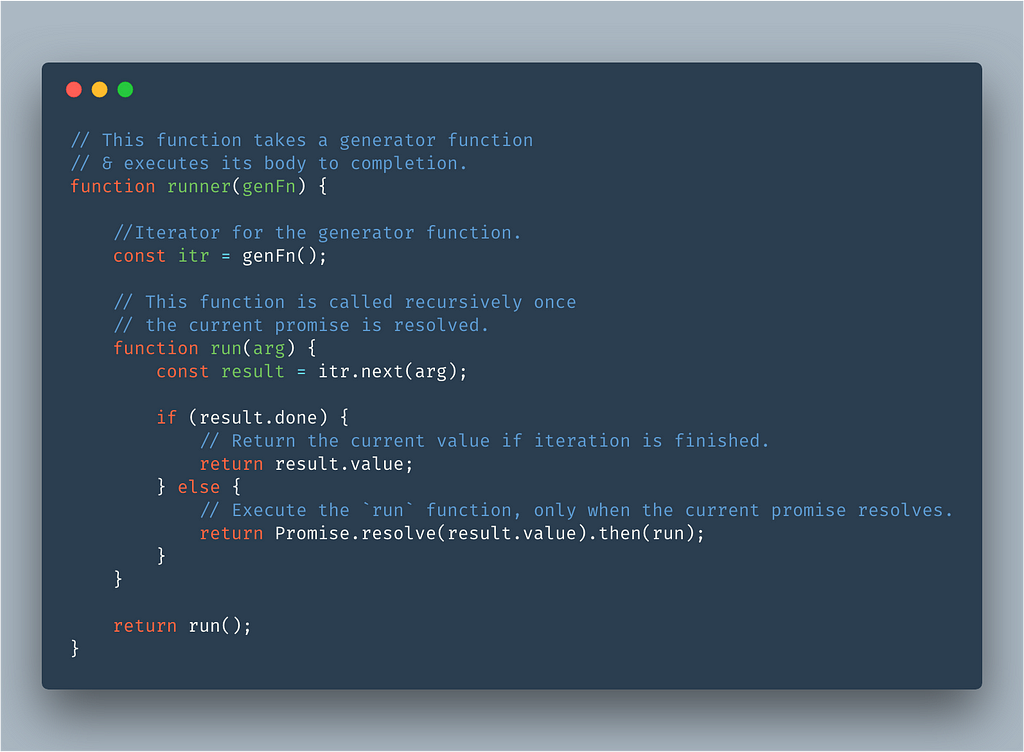 A function that executes a generator function. (Only for explanation, do not use it !)
A function that executes a generator function. (Only for explanation, do not use it !)
Now we can execute our generator function init using this runner function as shown below:
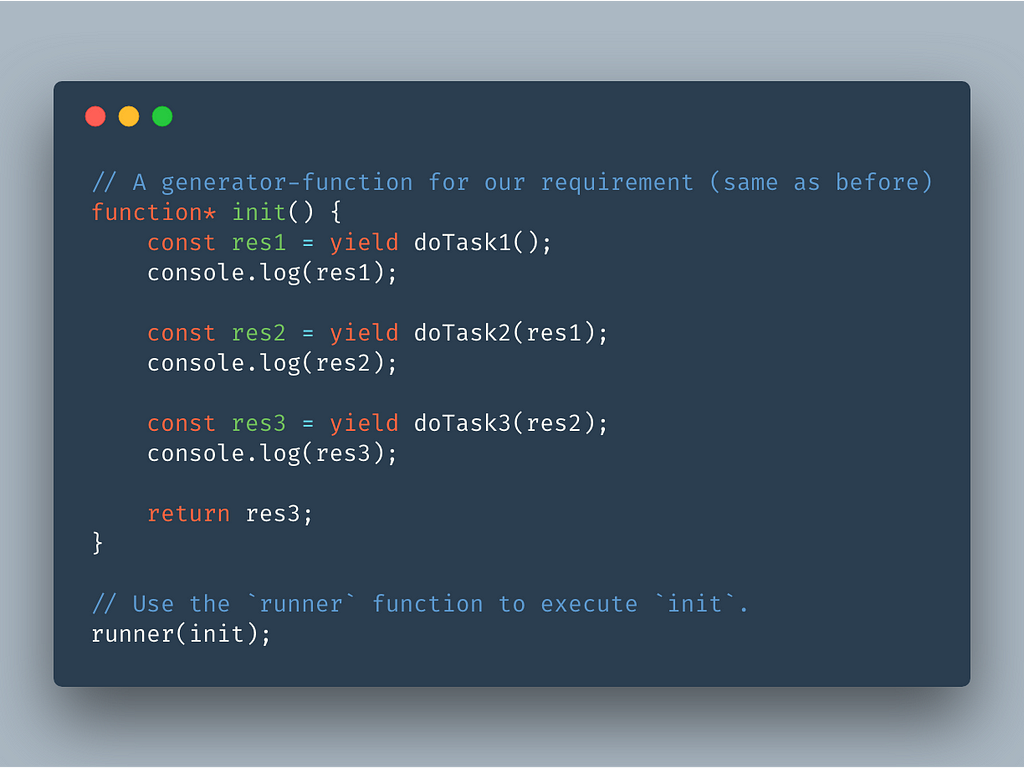 Use `runner` to execute the body of `init`.
Use `runner` to execute the body of `init`.
And that’s it! This combination of a runner function and our generator function achieves a similar outcome as the original async function.
Please note that this runner function is only for demonstrating the concept. It is not suitable for any serious use. If you are looking for a proper implementation, you can find it here.
To summarise
We started with an async function and then we wrote an identical implementation using generators and promises. That is, the following two pieces of code will have a similar effect :
- In the beginning of this article, we looked at how Babel transforms async code to ES2016 code using generators and promises. You can now revisit that transformed code and compare how our runner function is similar to the _asyncToGenerator function. In fact, that _asyncToGenerator function is the foolproof version of our extremely simple runner function.
- If you are still interested, you can go another step forward i.e. transform async functions to ES2015 code i.e. without generators. For this you would have to emulate generators themselves (using a stateful busy loop with switch cases for e.g. see the regenerator project).
I hope this explanation clears up the mystery behind async functions. They offer a simpler syntax and therefore less code noise. The proposal for async functions states that :
Thanks to Akos, Alisa & Kristian for providing their feedback to improve this article.
Async-Await ≈ Generators + Promises was originally published in Hacker Noon on Medium, where people are continuing the conversation by highlighting and responding to this story.
Disclaimer
The views and opinions expressed in this article are solely those of the authors and do not reflect the views of Bitcoin Insider. Every investment and trading move involves risk - this is especially true for cryptocurrencies given their volatility. We strongly advise our readers to conduct their own research when making a decision.
